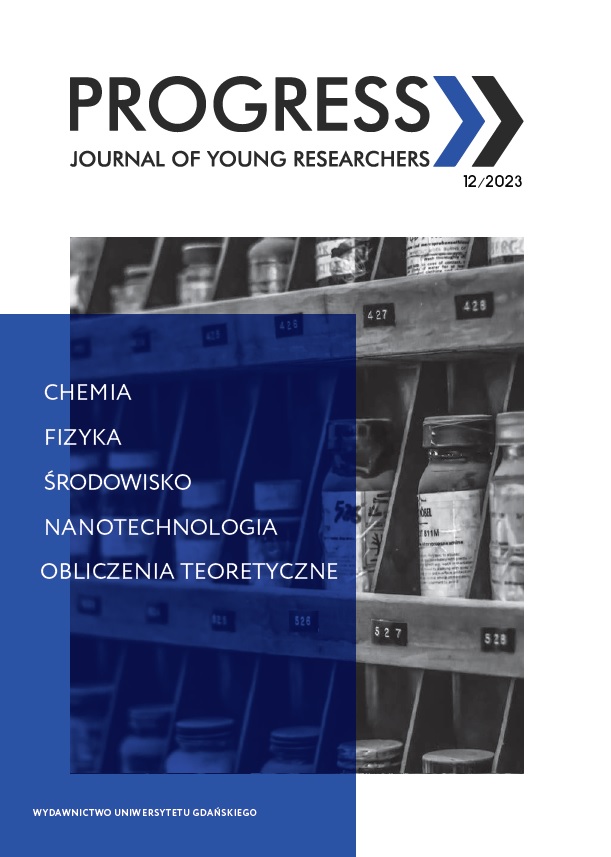Preparation and properties of ionogels based on imidazolium ionic liquids
DOI:
https://doi.org/10.26881/prog.2023.12.07Keywords:
gel polymer electrolyte, photopolymerization, ionic liquidsAbstract
Polymer ionogels are two-phase systems consisting of a solid polymer matrix and an ionic liquid trapped in it. Materials with good mechanical properties and high ionic conductivity have been used in electrochemical capacitors. Ionogels can be obtained by in-situ polymerization of monomers dissolved in an ionic liquid. Thiol-ene systems are interesting as polymer matrix precursors due to their insensitivity to oxygen, low polymerization shrinkage, and homogeneous polymer network formation. In this work ionogels that can be used in electrochemical capacitors as gel polymer electrolytes were obtained. These materials should becharacterized by high ionic conductivity (> 1 mS·cm–1) and mechanical resistance, especially during the operation or installation of electrochemical capacitors. In this study, ionogels with ionic conductivity above 1 mS cm–1 were obtained; therefore, they can be used as gel polymer electrolytes in electrochemical capacitors. Furthermore, these materials are characterized by good mechanical properties and can be twisted and rolled without suff ering damage.
Downloads
References
Andrzejewska E., Marcinkowska A., Zgrzeba A., 2017, Ionogels – materials containing immobilized ionic liquids, „Polimery”, nr 62.
Bideau J.L., Viaub L., Vioux A., 2011, Ionogels, ionic liquid based hybrid materials, „Chemical Society Reviews”, Vol. 40.
Cramer N.B., Reddy S.K., O’Brien A.K. i in., 2003, Thiol – Ene Photopolymerization Mechanism and Rate Limiting Step Changes for Various Vinyl Functional Group Chemistries, „Macromolecules”, Vol. 36.
Fouassier J.P., 1995, Photoinitiation, Photopolymerization, and Photocuring, Monachium.
Kim J.K., Matic A., 2010, An imidazolium based ionic liquid electrolyte for lithium batteries, „Journal of Power Sources”, Vol. 195, No. 22.
Kubisa P., 2004, Application of ionic liquids as solvents for polymerization processes, „Progress in Polymer Science”, Vol. 29.
Lewandowska A., Gajewski P., Szcześniak K., Sadej M., Patelski P., Marcinkowska A., 2021, Modification of Thiol – Ene Ionogels with Octakis (Methacryloxypropyl) Silsesquioxane, „Polymers”, Vol. 13.
Lewandowska A., Marcinkowska A., Gajewski P., Patelski P., 2021, Jonozele syntezowane metodą fotopolimeryzacji tiol/en/akrylan. Badania i rozwój młodych naukowców w Polsce, Poznań.
Northrop B.H., Coffey RN, 2012, Thiol – Ene Click Chemistry: Computational and Kinetic Analysis of the Influence of Alkene Functionality, „Journal American Chemical Society”, Vol. 134, No. 33.
Néouze M.A., Bideau J., Gaveau P.S. i in., 2006, Ionogels, New Materials Arising from the Confinement of Ionic Liquids within Silica – Derived Networks, „Chemistry of Materials”, Vol. 18.
Schneuwly A., Gallay R., 2000, Properties and application of supercapacitors from the state of-the-art to future trends, proceeding PCIM Power Quality, Nuremberg.
Viau L., Tourne-Peteilh C., Devoisselle J.M., Vioux A., 2010, Ionogels as drug delivery system: one-step sol–gel synthesis using imidazolium ibuprofenate ionic liquid, „Chemical Communications”, Vol. 46.
Vioux A., Le Bideau J., Viau L., 2011, Ionogels, ionic liquid based hybrid materials, „Chemical Society Reviews”, Vol. 40.
Wutticharoenwong K., Soucek M.D., 2008, Influence of the Thiol Structure on the Kinetics of Thiol – ene Photopolymerization with Time-Resolved Infrared Spectroscopy, „Macromolecular Materials and Engineering”, Vol. 293.
Zgrzeba A., Andrzejewska E., Marcinkowska. A, 2015, Ionic Liquid Containing –Ionogels by Thiol – Ene Photopolymerization, Kinetics and Solvent Effect. RSC Adv. 5.
Downloads
Published
How to Cite
Issue
Section
License
Copyright (c) 2023 Author(s)

This work is licensed under a Creative Commons Attribution 4.0 International License.

 Academic Scientific Journals
Academic Scientific Journals




